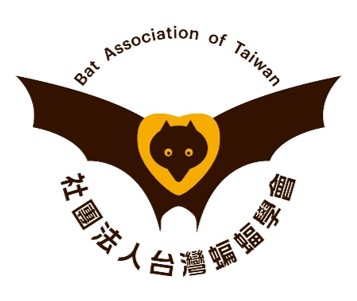蝙蝠研究
2006_新竹白蘭地區台灣彩蝠(Kerivoula sp.)食性與覓食策略之研究_江集鯉
出版年份:2006
研究生:江集鯉
分類:碩士論文
題目:新竹白蘭地區台灣彩蝠(Kerivoula sp.)食性與覓食策略之研究
Title:Diet and Foraging Strategies of Taiwanese woolly bat (Kerivoula sp.) at Bailan, Hsinchu
摘要:
本研究自2003年七月至2005年四月,於新竹白蘭地區選取三個樣區(上竹林、下竹林與闊葉林樣區)架設霧網及豎琴網捕捉台灣彩蝠(Kerivoula sp.),藉此瞭解台灣彩蝠於當地之主要活動棲地類型以及與食物資源的關係。同時收集台灣彩蝠之排遺進行分析以瞭解其基本食性,並進一步探討季節間食性變化與環境食物資源變化的關聯。同時也探討台灣彩蝠對於食物大小的選擇情形,並推測其於棲地內主要取食高度或位置以及捕食方式。
調查期間,相較於闊葉林樣區,在竹林樣區架設豎琴網之單一捕捉夜捕捉台灣彩蝠隻次顯著較多,但竹林樣區中台灣彩蝠之重要食物資源數量並未較多,因此食物資源的數量或許不是造成台灣彩蝠傾向活動於竹林而非闊葉林樣區之最重要原因。
分析49隻次的台灣彩蝠食性樣本(39隻個體,共198顆排遺)顯示,台灣彩蝠共取食19個食物類群(18個目的節肢動物)。其中11個類群為不會飛或不常飛的節肢動物,食性相對重要性共計68.0%。蜘蛛目的出現頻率為93.9%,相對重要性佔32.7%,為台灣彩蝠最重要的食物類群。故推測台灣彩蝠以揀拾(gleaning)為主要捕食方式。
相較於夏季,秋季竹林中蜘蛛目與鞘翅目數量下降,秋季時台灣彩蝠取食蜘蛛目與鞘翅目的比例亦相對減少,而食性寬度、食物類群數與食物體長範圍皆增加。推測秋季竹林中此兩類食物資源數量下降,導致台灣彩蝠對食物的選擇性降低,而使得食用的食物類群增加。
與環境食物資源比對,台灣彩蝠傾向選擇體長大於4.0mm之食物,其中食物體長介於4.1至6.0mm之比例最高。此外,食性與竹林上、中、下三層食物資源比較顯示,台灣彩蝠食性中重要食物類群較類似灌叢食物資源,推測白蘭地區台灣彩蝠可能主要於竹林灌叢覓食。
Abstract:
Since July, 2003 to April, 2005, we trapped Taiwanese woolly bats (Kerivoula sp.) at three sites (upper bamboo forest site, lower bamboo forest site and broad-leaf forest site) in Bailan, Hsinchu to study the main type of their foraging habitats at Bailan and the relationships between the habitats and food resource. The diet of Taiwanese woolly bat was revealed by analysing feces from captured individuals and we further investigated the relationships between the bats’ dietary variation and the fluctuation of food-resource.
Besides, we examined selection of prey size by Taiwanese woolly bat and tried to deduce height level of their foraging zone within the habitats and their preying mode.
During this research, we captured significantly more Taiwanese woolly bats at upper bamboo forest site than broad-leaf forest site; however, the quantities of the important food-resource of the bats at the bamboo forest site were not greater than that at broad-leaf forest. Perhaps the quantity of food-resource was not the most important factor leading to the phenomenon that Taiwanese woolly bat appeared more often at bamboo forest site than broad-leaf forest site.
Taiwanese woolly bat ate 19 prey items (18 arthropod orders), of which 11 items have no wings or poor flying ability. These 11 items comprised 68.0% of the relative importance of their diet. The most important food item of Taiwanese woolly bat was spider (Araneae) comprising 93.9% of the frequency of occurrence and 32.7% of the relative importance of diet. These results indicated that gleaning is the bats’ main preying mode.
Within bamboo forest, there were fewer quantities of spiders and beetles in autumn than summer, and such condition also occurred in the diet of the bats. Diet breadth, numbers of prey items and ranges of prey size all increased in autumn. We suggested that Taiwanese woolly bats would be less selective on food when spiders and beetles were rare during autumn. The less food-selection also resulted in the increase of numbers of prey items.
Taiwanese woolly bat tended to select the prey size larger than 4.0mm, 4.1 to 6.0mm was the most common range of prey size. The important prey items of Taiwanese woolly bats were more similar to food-resource at bushes than to that at median or upper level within bamboo forest. We suggested Taiwanese woolly bat at Bailan forages mainly at bushes in bamboo forests.
